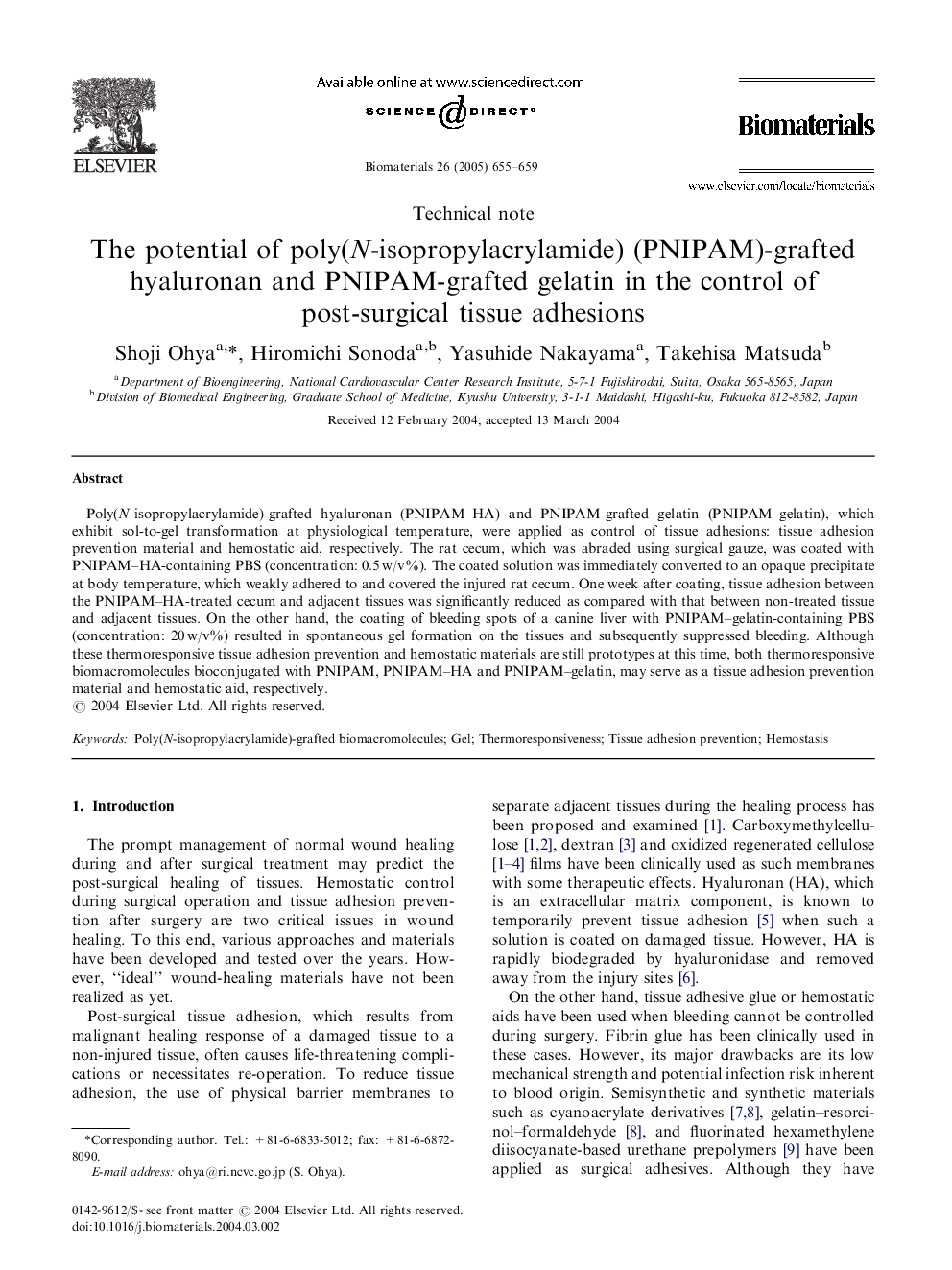| Article ID | Journal | Published Year | Pages | File Type |
|---|---|---|---|---|
| 10230331 | Biomaterials | 2005 | 5 Pages |
Abstract
Poly(N-isopropylacrylamide)-grafted hyaluronan (PNIPAM-HA) and PNIPAM-grafted gelatin (PNIPAM-gelatin), which exhibit sol-to-gel transformation at physiological temperature, were applied as control of tissue adhesions: tissue adhesion prevention material and hemostatic aid, respectively. The rat cecum, which was abraded using surgical gauze, was coated with PNIPAM-HA-containing PBS (concentration: 0.5Â w/v%). The coated solution was immediately converted to an opaque precipitate at body temperature, which weakly adhered to and covered the injured rat cecum. One week after coating, tissue adhesion between the PNIPAM-HA-treated cecum and adjacent tissues was significantly reduced as compared with that between non-treated tissue and adjacent tissues. On the other hand, the coating of bleeding spots of a canine liver with PNIPAM-gelatin-containing PBS (concentration: 20Â w/v%) resulted in spontaneous gel formation on the tissues and subsequently suppressed bleeding. Although these thermoresponsive tissue adhesion prevention and hemostatic materials are still prototypes at this time, both thermoresponsive biomacromolecules bioconjugated with PNIPAM, PNIPAM-HA and PNIPAM-gelatin, may serve as a tissue adhesion prevention material and hemostatic aid, respectively.
Keywords
Related Topics
Physical Sciences and Engineering
Chemical Engineering
Bioengineering
Authors
Shoji Ohya, Hiromichi Sonoda, Yasuhide Nakayama, Takehisa Matsuda,
